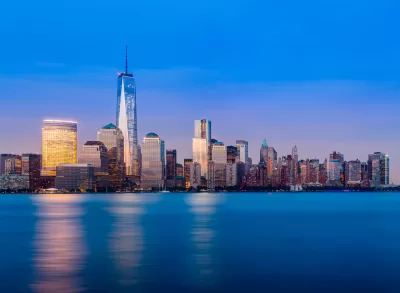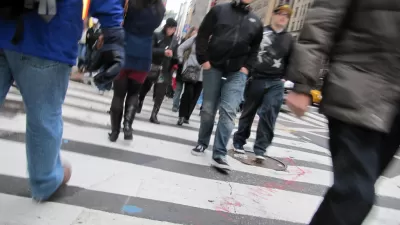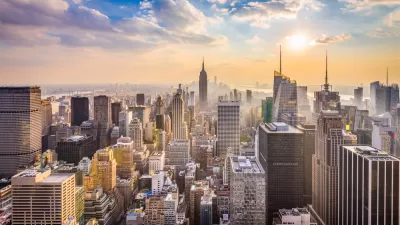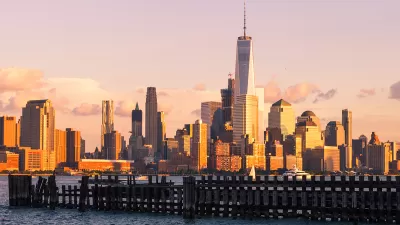In the period since 9/11, Lower Manhattan has undergone a residential boom. With daytime professionals and tourists also in the mix, the strain is showing.

New York City, Manhattan is particular, is growing rapidly. Winnie Hu writes, "By 2000, the city’s population had passed eight million for the first time. Today, it is 8.5 million and counting. By 2040, it is expected to hit nine million, according to city projections."
Despite the damage of September 11, Lower Manhattan has shared in those riches, growing into a residential hub as well as a commercial one. But there is a downside: overcrowding. Said one resident: "We always wished for more restaurants and bars, but what's come with that is trash, noise and congestion. It's one of those double-edged swords."
Part of the story is the disruption that ongoing development causes. "Construction is booming, with 2,465 permits issued for new building projects in 2015, up from 1,517 in 2010, rebounding from an earlier dip during the recession. [...] A labyrinth of imposing metal scaffolding hems in available walkways and forces pedestrians closer together, or into the street."
Trash collection is another problem, as are overcrowded sidewalks. One resident, Hu writes, "used to ride [bikeshare] from her apartment in TriBeCa to her office on Maiden Lane in the financial district nearly every day. But as more pedestrians and cyclists filled the streets, she had to concentrate to avoid running into anyone or being run into."
The area's street layout doesn't help. Lower Manhattan's "residential skyscrapers sit on a colonial-era maze of narrow streets that was not designed for the masses. The city's rectilinear grid above Houston Street allows for better mobility."
FULL STORY: Downside of Lower Manhattan’s Boom: It’s Just Too Crowded

Alabama: Trump Terminates Settlements for Black Communities Harmed By Raw Sewage
Trump deemed the landmark civil rights agreement “illegal DEI and environmental justice policy.”

Study: Maui’s Plan to Convert Vacation Rentals to Long-Term Housing Could Cause Nearly $1 Billion Economic Loss
The plan would reduce visitor accommodation by 25% resulting in 1,900 jobs lost.

Planetizen Federal Action Tracker
A weekly monitor of how Trump’s orders and actions are impacting planners and planning in America.

Wind Energy on the Rise Despite Federal Policy Reversal
The Trump administration is revoking federal support for renewable energy, but demand for new projects continues unabated.

Passengers Flock to Caltrain After Electrification
The new electric trains are running faster and more reliably, leading to strong ridership growth on the Bay Area rail system.

Texas Churches Rally Behind ‘Yes in God’s Back Yard’ Legislation
Religious leaders want the state to reduce zoning regulations to streamline leasing church-owned land to housing developers.
Urban Design for Planners 1: Software Tools
This six-course series explores essential urban design concepts using open source software and equips planners with the tools they need to participate fully in the urban design process.
Planning for Universal Design
Learn the tools for implementing Universal Design in planning regulations.
Caltrans
Smith Gee Studio
Institute for Housing and Urban Development Studies (IHS)
City of Grandview
Harvard GSD Executive Education
Toledo-Lucas County Plan Commissions
Salt Lake City
NYU Wagner Graduate School of Public Service





























